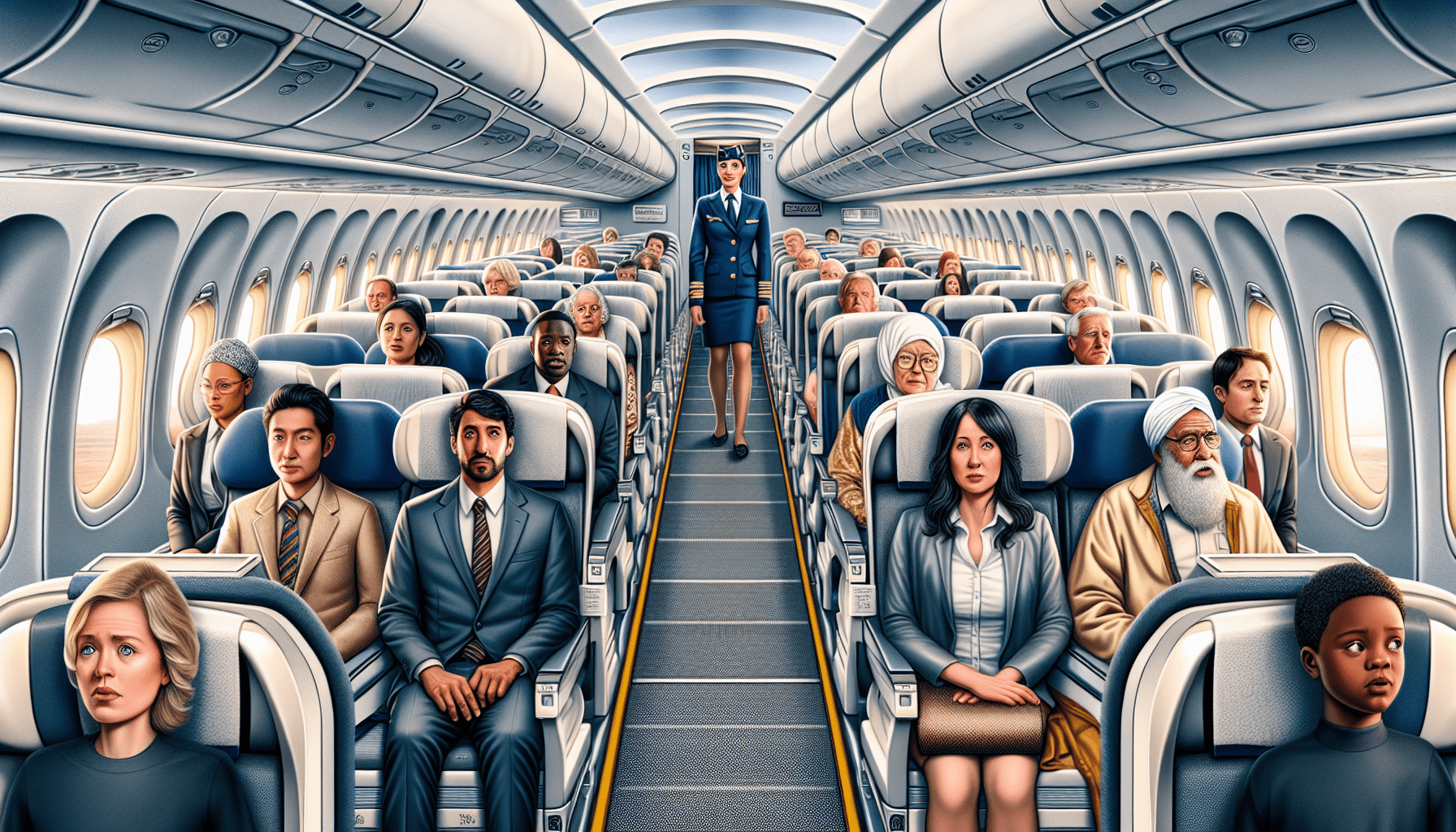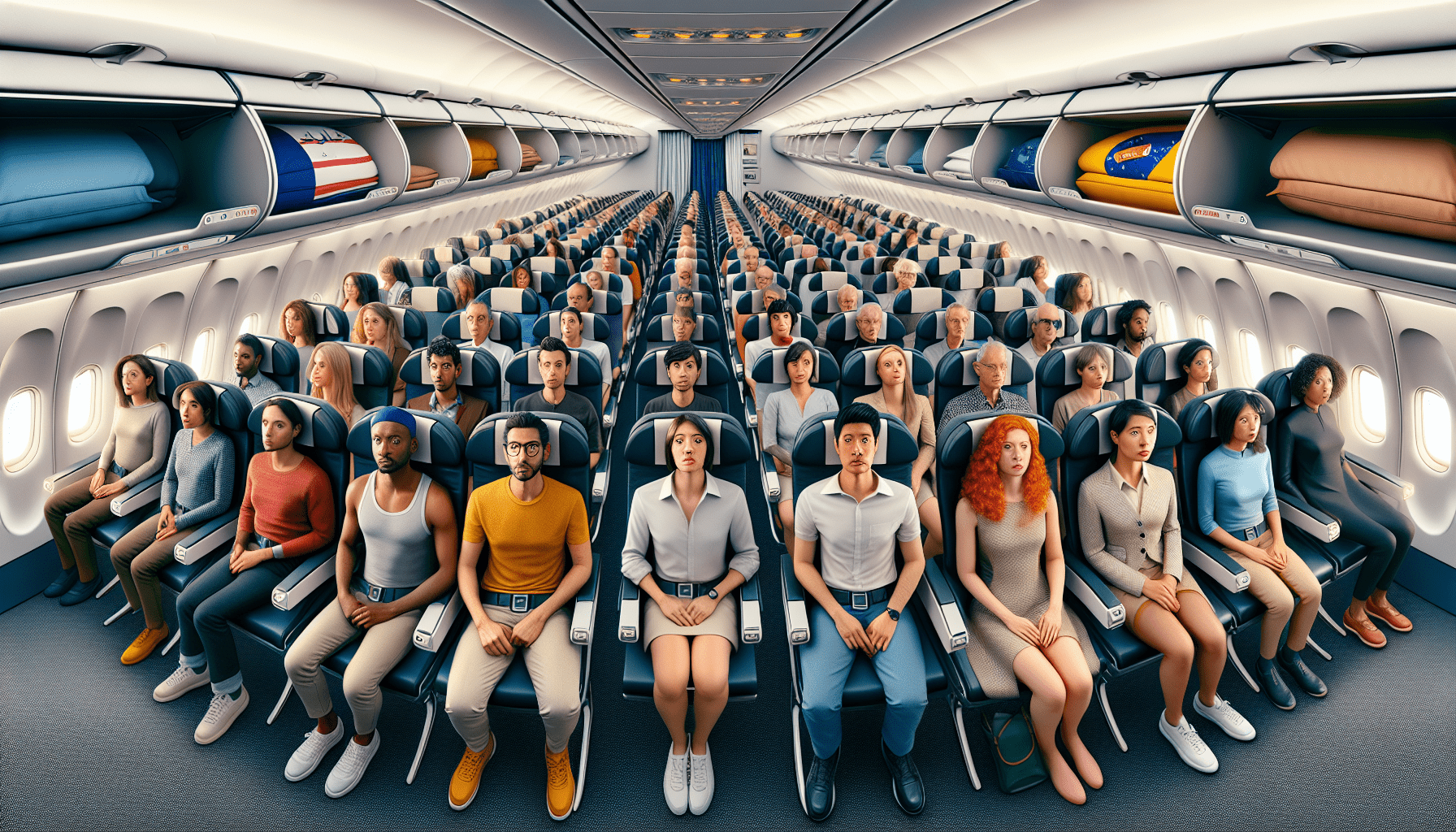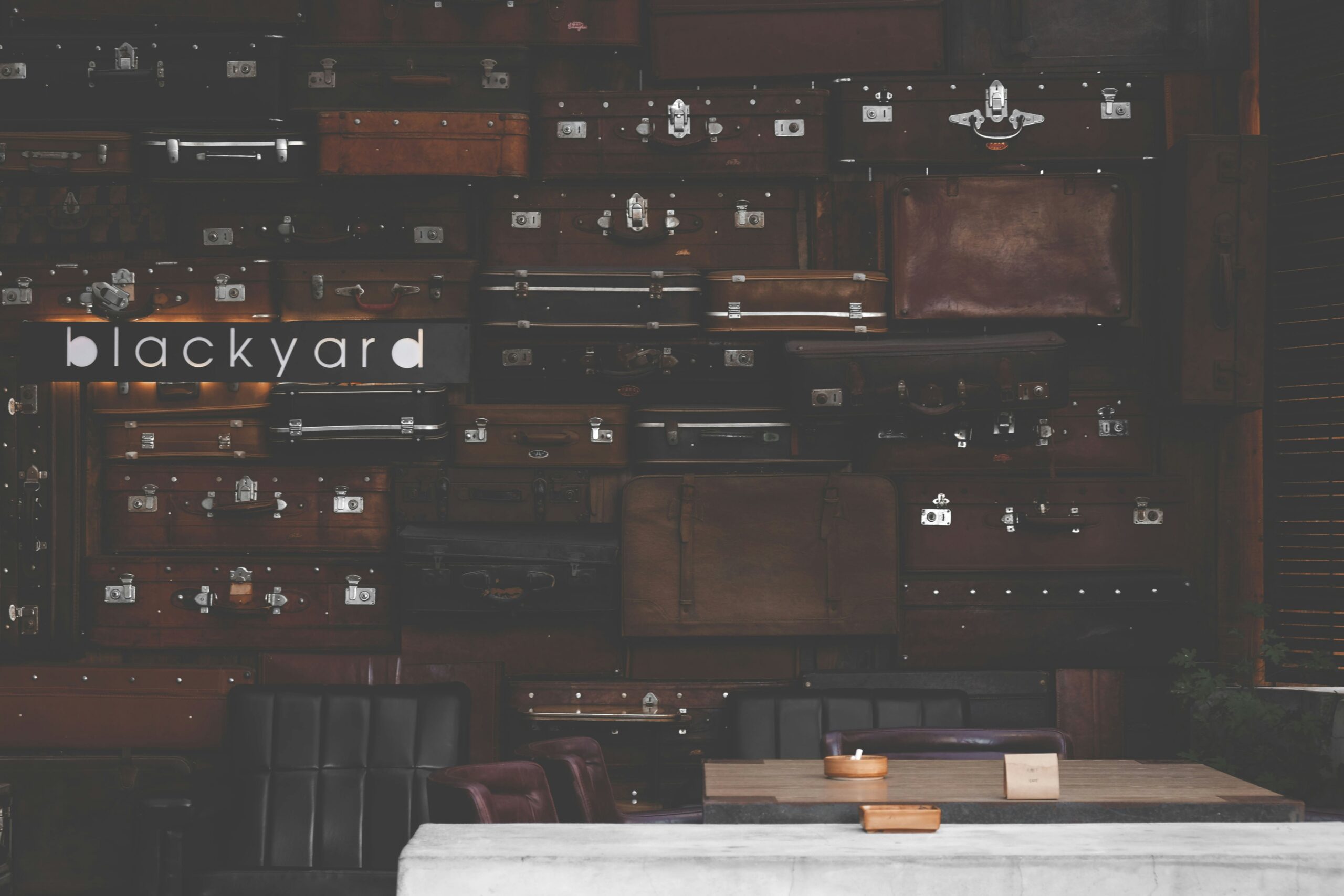Veken 8 Set Packing Cubes for Travel Essentials, Suitcase Organizer Bags Set for Luggage, Road Trip Travel Accessories in 4 Sizes (Extra Large, Large, Medium, Small), Black
$24.99 (as of April 20, 2025 04:48 GMT +00:00 - More info)Did you know that rear-facing seats on airplanes are technically safer than forward-facing seats? According to aviation safety experts, this seating arrangement provides more support to the upper body during impacts or crashes, increasing the chances of survival. However, despite the safety benefits, passengers generally dislike these seats. One reason is passenger preference, as most adults prefer facing the same direction as the vehicle they’re in. Additionally, rearranging the seating arrangement would be costly for airlines, as it would require redesigning the entire cabin and budgeting for additional expenses. So, while some airlines have embraced rear-facing seats, don’t expect to see many changes to flight seats anytime soon.
Shop These Accessories for a Comfortable Trip
Flight safety and seating arrangements
Flight safety is of utmost importance when it comes to air travel. Whether you’re flying economy or first class, the safety of the passengers should always be the top priority. While all seats on an airplane are designed with safety in mind, some seating arrangements are considered safer than others. In fact, according to a 2015 Time investigation, the middle seats in the back of the plane are deemed the safest. However, there is an additional tweak that can further enhance the safety of airplane seating: rear-facing seats.
Importance of flight safety
Flight safety is crucial regardless of the airline or the cost of your ticket. Airlines prioritize the safety of their passengers and take extensive measures to ensure a safe journey. From regular maintenance and inspections of the aircraft to highly trained pilots and cabin crew, every aspect of flight safety is meticulously addressed.
Safest airplane seats
According to research and aviation safety experts, the safest seats on an airplane are the middle seats in the back of the plane. These seats are typically closer to the emergency exits and more protected in the event of an impact or crash. When it comes to safety, it’s important to consider factors such as proximity to emergency exits, impact forces, and ability to evacuate the aircraft efficiently.
Benefits of rear-facing seats
While all seats on an airplane are designed with safety in mind, rear-facing seats have been found to offer additional safety advantages. These seats provide increased support to the upper body during an impact or crash, reducing the chances of injuries. Rear-facing seats also distribute the impact forces more evenly across the body, minimizing the risk of whiplash and head injuries.
Historical background
The concept of rear-facing seats in airplanes dates back to at least 1952. An article published in “Naval Aviation News” stated that passengers in Navy transport planes had a ten-fold better chance of surviving crashes thanks to backward-facing seats. Despite the proven safety advantages, rear-facing seats never gained significant traction in commercial airplanes. However, many military aircraft still utilize aft-facing seats today.
Passenger preference and cost considerations
While rear-facing seats offer enhanced safety, passenger preference and cost considerations play a significant role in the seating arrangements of commercial airplanes.
Passenger preference for forward-facing seats
Most adults prefer to face the same direction as the vehicle they are in. This preference for forward-facing seats was highlighted in a 1985 study published in the American Journal of Public Health. The study recorded seating preferences in metro trains, where 66% of children chose to face backward compared to only 25% of adults. Passengers generally feel more comfortable and at ease when they can see the direction they are traveling in.
Cost implications of changing seating arrangements
Implementing rear-facing seats in commercial airplanes would require significant changes to the cabin layout and seat designs. Airlines would need to rip out and rotate the existing seats, redesign the cabin interiors, and factor in additional costs for strengthening the seats and the aircraft floor. These changes would result in higher operating costs and potentially increase fuel consumption due to the added weight of the aircraft.

Shop These Accessories for a Comfortable Trip
Current adoption of rear-facing seats
While rear-facing seats have not gained widespread popularity in commercial airplanes, some airlines have embraced this seating arrangement for specific aircraft classes.
Airlines embracing rear-facing seats
British Airways and United Arab Emirates-based Etihad Airways are among the airlines that have incorporated rear-facing seats in certain parts of their aircraft. British Airways uses rear-facing seats in the middle blocks and near the windows in its upgraded Club World cabins. Similarly, Etihad Airways utilizes backward-facing seats in a few of its aircraft, but these seats are only found in upgraded airline classes.
Examples of airlines using rear-facing seats
In a TikTok video that went viral in 2023, TikTok creator Megan Homme showcased a unique seating layout on a regional airline in Sweden. The rows faced each other, allowing for both front-facing and rear-facing seats. However, the knee-to-knee configuration of the seating arrangement received mixed opinions from passengers.
In the United States, rear-facing seats are becoming increasingly rare. Southwest Airlines once included aft-facing seats in its lounge configurations but phased them out in the 1990s. Currently, rear-facing seats can still be found in some United and American Airlines business class layouts.
Safety concerns and passenger feedback
While rear-facing seats offer safety advantages, they also raise certain concerns and draw mixed opinions from passengers.
Mixed opinions on rear-facing seats
Passenger feedback on rear-facing seats is divided. Some passengers appreciate the added safety and support offered by these seats, while others find the orientation uncomfortable or disorienting. The unfamiliarity of facing backward during takeoff and landing can be a source of discomfort for some travelers.
Challenges associated with knee-to-knee configuration
The knee-to-knee seating configuration, as showcased in the viral TikTok video, presents its own challenges. Passengers may feel cramped and restricted in their personal space due to the close proximity to their seatmates. This configuration might be less ideal for travelers who value privacy and personal space during their flight.

Benefits of rear-facing seats
Despite the challenges and mixed opinions, rear-facing seats offer several benefits that cannot be ignored.
Increased support during impact or crash
Rear-facing seats provide increased support to the upper body during an impact or crash. By distributing the impact forces more evenly across the body, these seats can help minimize the risk of injuries, particularly to the head and neck.
Potential reduction in injuries
Studies and aviation experts have suggested that rear-facing seats have the potential to reduce the risk of injuries during accidents. The backward orientation of the seats helps prevent the abrupt forward movement of the body, which can lead to whiplash and other impact-related injuries.
Safety advantages for children
Rear-facing seats have long been recommended for infants and young children in automobiles due to their enhanced safety benefits. The same principle can be applied to air travel, where rear-facing seats can provide added protection for young passengers during turbulence or other unforeseen circumstances.
Drawbacks and challenges
While rear-facing seats offer safety advantages, there are also drawbacks and challenges associated with their implementation.
Higher operating costs
Implementing rear-facing seats would require substantial changes to the cabin layout and seat designs. This redesigning process, along with strengthening the seats and the aircraft floor, would result in higher operating costs for airlines. These higher costs might deter airlines from adopting rear-facing seats on a larger scale.
Need for cabin redesign
Switching to rear-facing seats would necessitate the redesign of the entire cabin interior. This redesigning could lead to logistical challenges for airlines, as they need to ensure the new design adheres to safety regulations, maximizes space efficiency, and provides a comfortable and enjoyable flying experience for passengers.
Increase in fuel consumption
The additional weight resulting from the cabin redesign and strengthened seats could lead to increased fuel consumption. This increase in fuel consumption would have economic and environmental implications, as airlines strive to minimize their carbon footprint and operational costs.
Future prospects and industry trends
While rear-facing seats offer safety advantages, it is unlikely that there will be significant changes to flight seating arrangements in the near future. The combination of passenger preference for forward-facing seats, the cost implications of redesigning the cabin, and the potential increase in fuel consumption makes it challenging for airlines to adopt rear-facing seats on a larger scale.
However, it’s worth noting that technology and industry trends are constantly evolving. As research and development in aviation safety continue, there may be new seating innovations and designs that strike a balance between safety, passenger preferences, and cost considerations.
Passenger safety and reassurance
Passenger safety and reassurance should always be a priority for airlines. While the adoption of rear-facing seats may not be widespread, airlines can offer options to passengers who are concerned about safety. This could include providing information about the safety features and precautions taken by the airline, as well as offering alternatives such as providing seat belts with enhanced safety features.
Examples of airlines and seating arrangements
Several airlines have experimented with different seating arrangements, including rear-facing seats.
TikTok video showcasing unique seating layout
In a viral TikTok video, Megan Homme shared her experience on a regional airline in Sweden, showcasing a unique seating layout where rows faced each other. This allowed for both front-facing and rear-facing seats, providing passengers with a mix of seating options.
British Airways and United Arab Emirates-based Etihad Airways
British Airways and Etihad Airways have incorporated rear-facing seats in certain parts of their aircraft. British Airways utilizes rear-facing seats in the middle blocks and near the windows in its upgraded Club World cabins. Etihad Airways also offers backward seats, but they are limited to specific aircraft and upgraded airline classes.
Availability of rear-facing seats in United and American Airlines
In the United States, rear-facing seats can still be found in some United and American Airlines business class layouts. These seats offer enhanced safety features for passengers traveling in these upgraded airline classes.
Conclusion
Flight safety is paramount in air travel, and seating arrangements play a significant role in ensuring passenger well-being. While rear-facing seats offer safety advantages, passenger preferences and cost considerations make it unlikely for major changes to be implemented in the near future. Airlines must strive to strike a balance between safety and passenger preferences, providing reassurance to travelers through the adoption of other safety measures and the availability of alternative seating options. Ongoing discussions and research on seating arrangements in airplanes are crucial to finding innovative solutions that prioritize passenger safety without compromising comfort or economy.
Shop These Accessories for a Comfortable Trip






